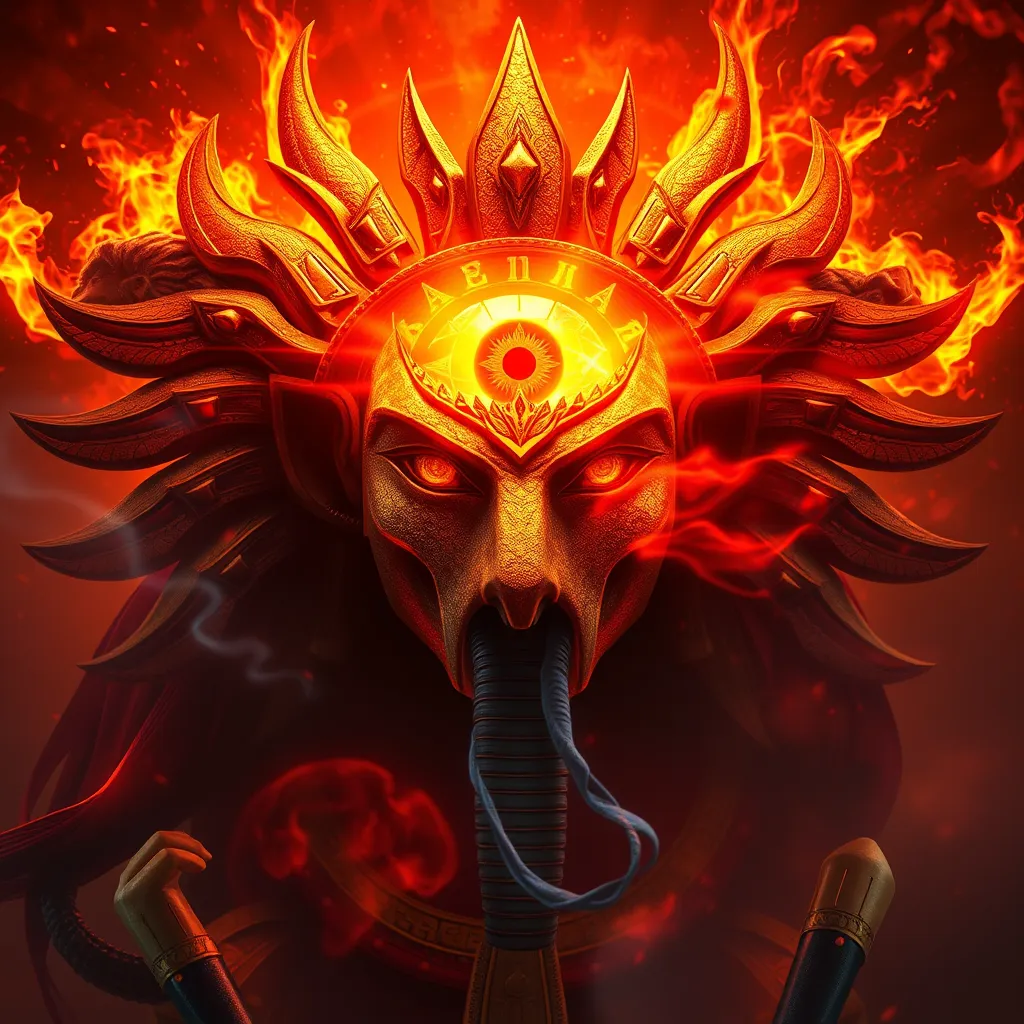The Eye of Ra: The Goddess Sekhmet’s Wrath and the End of the World
I. Introduction
The Eye of Ra holds a prominent place in ancient Egyptian mythology, symbolizing divine retribution and protection. It is often depicted as a fierce and powerful entity that can unleash chaos upon the world. Within this context, the goddess Sekhmet emerges as a significant figure, embodying the duality of destruction and healing. Known as the lioness goddess, Sekhmet represents both war and the restorative powers of medicine. This article explores the Eye of Ra as a representation of Sekhmet’s wrath and its implications for the end of the world in ancient Egyptian belief.
II. The Mythological Context of the Eye of Ra
The Eye of Ra is a complex symbol in Egyptian mythology, often associated with the sun god Ra. It is considered an extension of his power, representing his ability to see everything and to administer justice. The Eye is not merely a passive observer; it has a dynamic role in the universe.
- Definition and Symbolism: The Eye of Ra is often depicted as a human eye with markings representing the falcon, symbolizing the sun and power.
- Relationship with Ra: As Ra’s eye, it embodies his protective nature, but it can also become a source of destruction if angered.
- Protective and Destructive Force: The Eye serves to protect the pharaohs and the land but can also unleash wrath upon those who defy the gods.
III. Sekhmet: The Goddess of War and Healing
Sekhmet, often depicted as a lioness or a woman with a lioness head, holds a dual role in ancient Egyptian culture. She is recognized both as a warrior goddess and a healer, showcasing the complexity of her nature.
- Origins and Attributes: Sekhmet originates from the mythology surrounding the sun god Ra, believed to be his daughter. She embodies the fierce aspects of the sun.
- Dual Nature: As a protector, she defends the pharaoh and the land, but her wrath can lead to destruction, reflecting the balance between chaos and order.
- Symbol of Power: The lioness is a powerful symbol in Egyptian iconography, representing ferocity and the fierce protection of the pharaoh.
IV. The Wrath of Sekhmet: Causes and Consequences
The myths surrounding Sekhmet’s anger often describe how her wrath can be triggered by human actions or the failure of mortals to honor the gods.
- Triggers of Anger: Sekhmet’s fury was often incited by the disobedience of humans or the need for divine justice.
- Rampage Stories: One famous myth recounts how Sekhmet went on a rampage across Egypt, killing humans until her bloodlust was quenched.
- Divine Justice: These stories reflect the ancient Egyptians’ belief in the necessity of divine retribution for maintaining cosmic order.
V. The End of the World in Egyptian Mythology
The concept of the apocalypse in ancient Egyptian beliefs is closely tied to cycles of destruction and rebirth, with Sekhmet playing a pivotal role in these narratives.
- Apocalyptic Beliefs: Egyptians believed that the world could end through the wrath of the gods, particularly through the destructive power of Sekhmet.
- Connections to Sekhmet: Her anger is often seen as a precursor to cataclysmic events, leading to the end of an era.
- Cyclical Nature: Despite destruction, the myths emphasize the idea of rebirth, where life emerges anew from chaos.
VI. The Rituals and Worship of Sekhmet
To appease Sekhmet and mitigate her wrath, ancient Egyptians engaged in various rituals and worship practices.
- Ritual Practices: Rituals included offerings, prayers, and sacrifices aimed at calming her fierce nature.
- Temples and Cults: Temples dedicated to Sekhmet, such as the one in Memphis, became centers of worship and healing.
- Festivals: Celebrations like the Feast of Sekhmet highlighted her dual nature and the importance of balancing her wrath with healing.
VII. Modern Interpretations and Cultural Impact
The legacy of Sekhmet and the Eye of Ra continues to resonate in contemporary culture, influencing literature, art, and media.
- Literary References: Sekhmet and the Eye of Ra appear in various books, exploring themes of power and retribution.
- Artistic Representations: Artists have depicted her as a symbol of strength and ferocity, reflecting her enduring impact.
- Modern Society’s Interpretation: Today, many view these ancient myths as cautionary tales about the consequences of defiance against natural and divine order.
VIII. Conclusion
In conclusion, the Eye of Ra and the goddess Sekhmet embody the complexities of ancient Egyptian beliefs about divine wrath and cosmic order. The enduring significance of these symbols highlights the relationship between human actions and divine retribution, offering insights into the ancient worldview. As we reflect on these myths, we recognize their timeless relevance in understanding power, justice, and the balance between creation and destruction.




